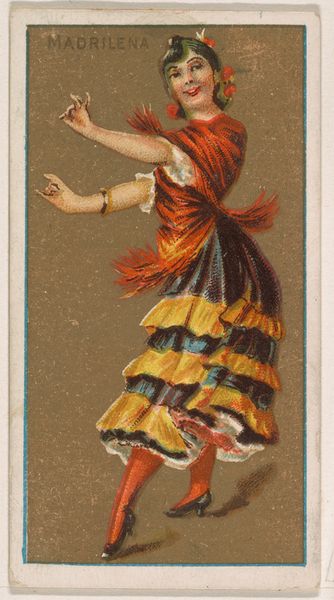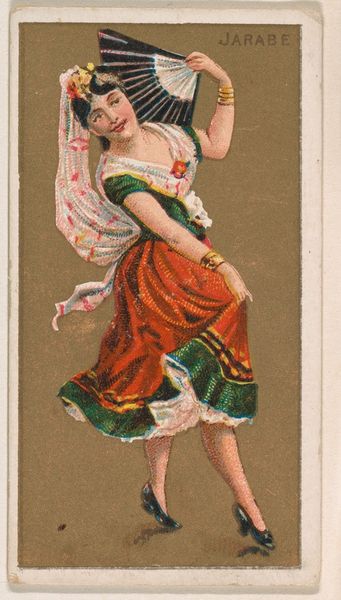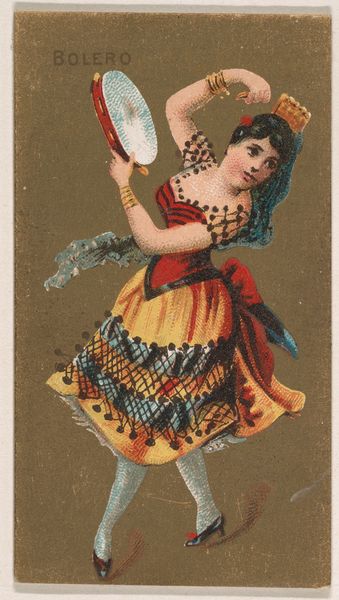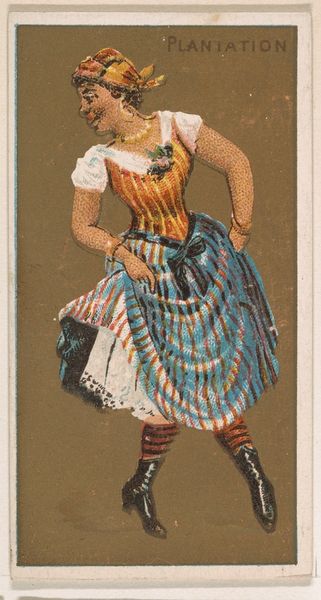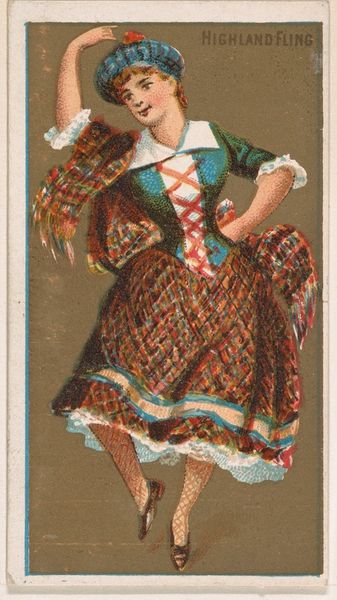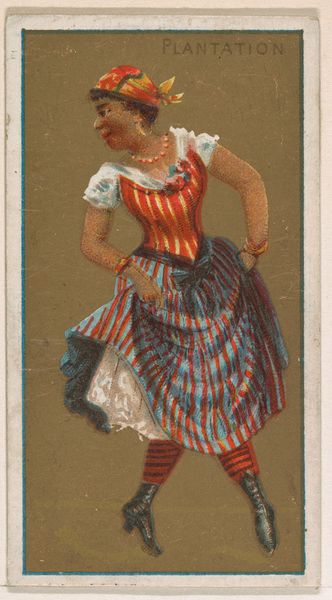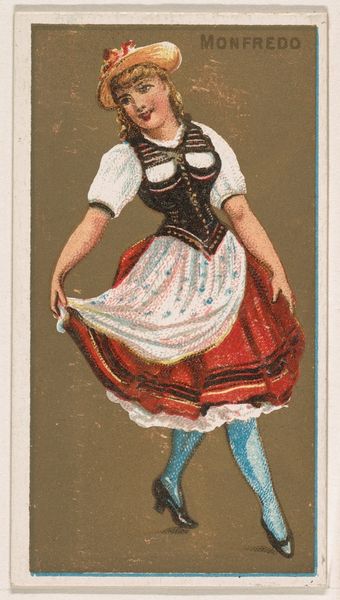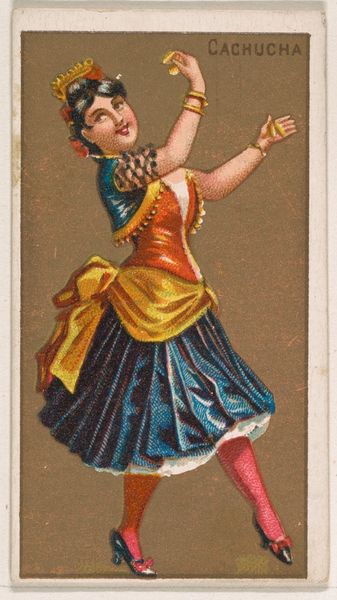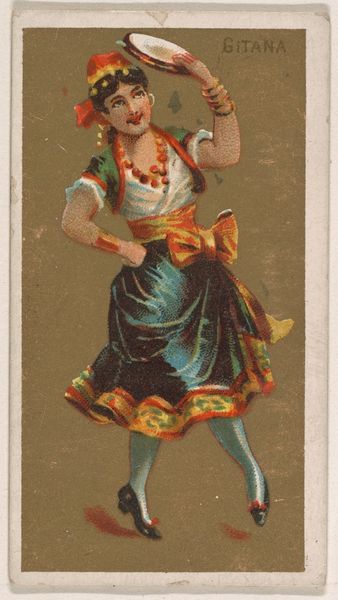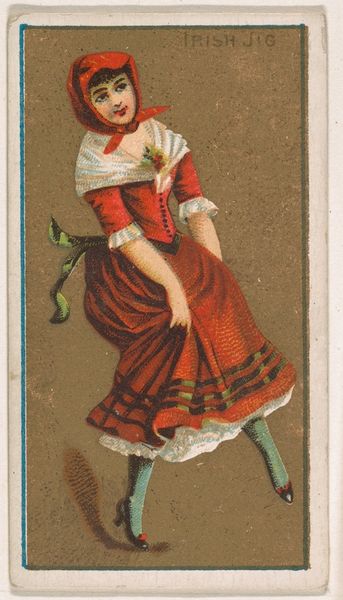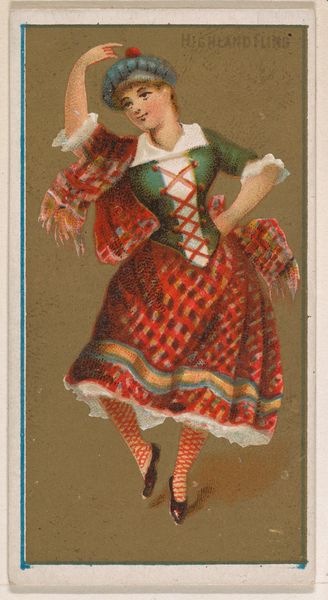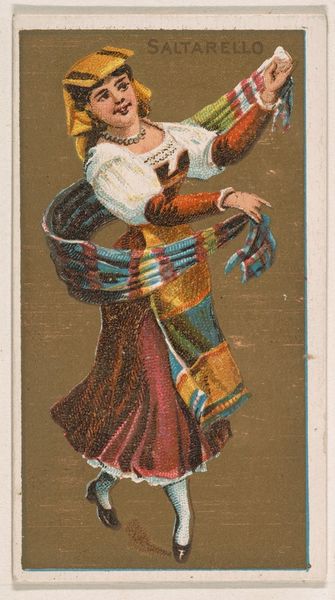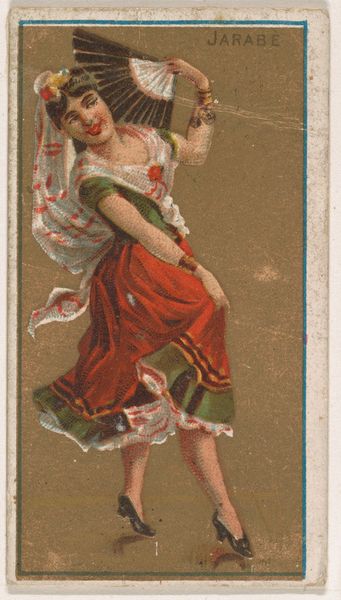
Bolero, from National Dances (N225, Type 1) issued by Kinney Bros. 1889
0:00
0:00
drawing, print, paper
#
portrait
#
drawing
# print
#
figuration
#
paper
#
naive art
#
portrait art
Dimensions: Sheet: 2 3/4 × 1 1/2 in. (7 × 3.8 cm)
Copyright: Public Domain
This small chromolithograph of a Bolero dancer was one of a series of cigarette cards issued by the Kinney Brothers Tobacco Company in the late nineteenth century. These cards, like other forms of commercial imagery, are revealing documents of cultural exchange and social hierarchy. Here, a white woman in theatrical costume performs a Spanish dance. The Bolero developed in Spain in the late 1700s as an expressive solo or partnered dance, often accompanied by song and castanets. As the dance gained international popularity, it became a popular trope in visual culture, opera, and musical theater. Tobacco cards like these helped to disseminate romanticized versions of foreign cultures to mass audiences in the United States. These images frequently glossed over the complex histories of colonialism and empire. To fully understand the meaning of this image we might consult archives of commercial ephemera and theater history. This is an example of how art historians draw on interdisciplinary resources to better understand the social and institutional contexts that shape what we see.
Comments
No comments
Be the first to comment and join the conversation on the ultimate creative platform.
